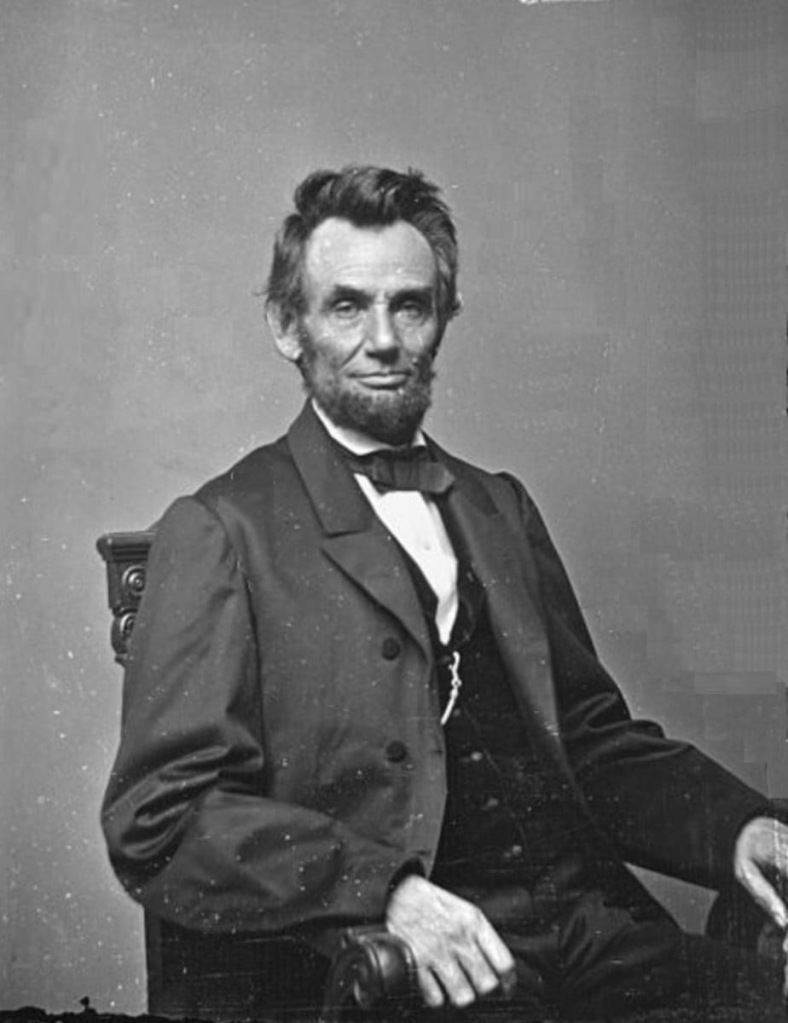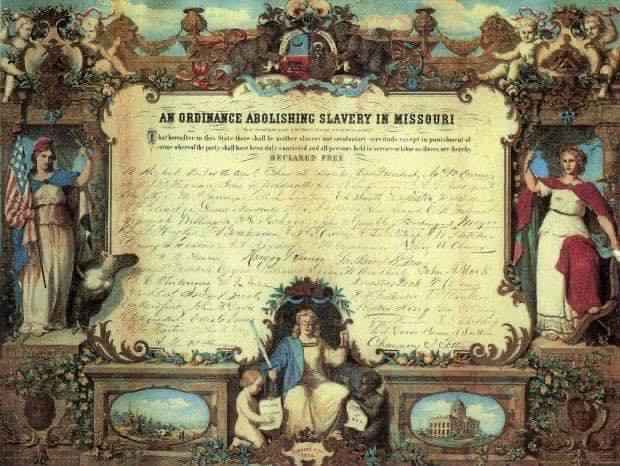On January 11, 1865, Missouri’s Constitutional Convention called together in St. Louis declared: All men are born free and independent and have certain inherent rights; among these are life, liberty, and the pursuit of happiness. It is therefore, declared, that slavery and involuntary servitude shall cease to exist in Missouri, on the fourteenth day of January, A.D. eighteen hundred and sixty-five, otherwise than for the punishment of crime, whereof the party shall have been duly convicted. And all slaves within this State on that day are hereby declared to be free.*
*Journal of the Missouri State Convention Held at the City of St. Louis, Missouri Democrat, Corner Fourth and Pine Sts, St. Louis, 1865
On January 1, 1863, when President Abraham Lincoln’s Emancipation Proclamation took effect, the formerly enslaved would literally dance in the street. However, Lincoln’s Proclamation did not free those here within the border State of Missouri or Saint Charles County. That would require a Constitutional Convention, of the elected officials of the State of Missouri, with a representative from each county in order to amend the State’s Constitution. That Convention convened on January 6, 1865, in the City of St. Louis. On that opening day, the first order of business would be to elect a President to preside over this history-making event, as the Convention had been called in order to deal with the issue of “Emancipation” for those enslaved. That would be a German-born immigrant named Arnold Krekel.

By the 10th of January, a new Ordinance had been written and laid upon the table to be read before the proceedings the next day. On January 11, 1865 the Convention dispensed with the rule that the new Ordinance had to be read and voted on three separate days and allowed for all three readings to be done at once. The first reading was held, and the vote was 60-4. With three members not present. Some discussion followed, and a few words were substituted but the essence of the motion remained the same. The second reading was then held and a highly respected Unitarian minister, Dr. William Greenleaf Eliot offered a prayer for the Convention’s proceedings. Then the Vice-President of the Convention, Charles D. Drake asked that the 44th Rule be suspended and that the Constitutional Amendment be adopted. After the third and final reading the issue was adopted. From that moment forward, all of those who had ever been enslaved in Missouri would be forever free!

The Civil War began in Missouri at Camp Jackson in St. Louis when Brig. General Nathaniel Lyon, led 3,000 Union troops, of which 2400 were of German ancestry, to capture the ostensibly neutral State Militia who were planning to raid the Federal arsenal. Secessionist crowds had gathered to watch the event, and 28 civilians were killed that day. Martial law followed, and Union Troops ensured that Missouri remained under Union control for the balance of the war.

President Abraham Lincoln’s leadership would ensure that the 2 million men, both black and white who enlisted in the Union Army won. Nearly 600,000 of those soldiers gave their lives to keep that resolution enforced and our country whole. With Lincoln’s Emancipation Proclamation, the formation of the Union Army’s Colored Troops would enable black men to join in the fight, working to break their own bonds of slavery.


Missouri had entered the Union as a slave state in 1821. In August of 1860, the last census of those enslaved in Missouri had shown that there were 2,210 enslaved people in Saint Charles County. There were estimated to be 114,900 enslaved, or 9.7% of its’ population in the entire state. In the Dardenne Township alone of Saint Charles County there were over four-hundred enslaved people, and just over half of them were male. The largest slaveowner in Dardenne Township was David Kyle Pitman, who kept thirty-seven people living in four houses. Just down the road lived his son Richard Hickman Pitman who owned another ten enslaved people, the oldest of which was a reportedly forty-five years old black man, whose name was Archer Alexander and who had been originally owned by Richard’s father.
On January 11, a group of Missouri men had taken steps to see that freedom truly was for all men, whether black or white. The date is significant as well because it was approved three weeks prior to the United States Congress proposing the 13th Amendment to the U.S. Constitution, which was ratified by Congress on the 31st of January 1865. From that day forward, all those formerly enslaved would know freedom.





One response to “Missouri’s Slaves are Freed”
Reblogged this on Dorris Keeven Franke and commented:
Missouri’s Emancipation Proclamation made on January 11, 1865, would bring freedom for all of its’ former slaves… Sharing my St. Charles County History blog…
LikeLiked by 1 person